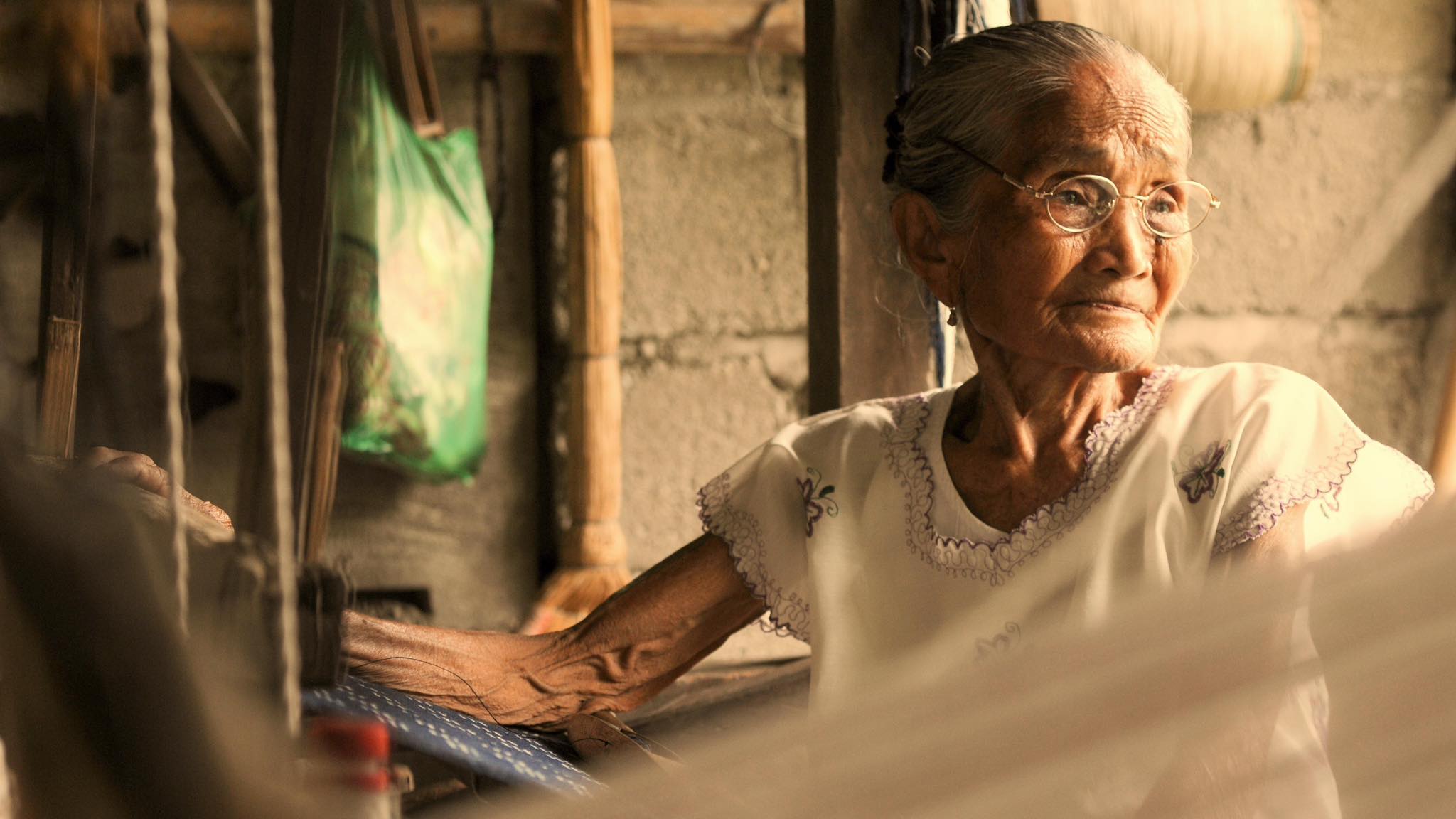Meet Magdalena Gamayo, one of the Philippines' National Living Treasures set to reach 100 years old
The Ilocano master weaver was honored at the "Panaglaga Ti Lagda: Weave Transcending Time" fashion show and exhibition in Davao City
By John Legaspi
In 1992, the Philippine government, through the National Commission for Culture and the Arts (NCCA), shed light on the many cultural bearers of folk art through the Gawad sa Manlilikha ng Bayan (GAMABA).
Also known as the National Living Treasure Awards, GAMABA recognizes Filipino artisans, “whose distinctive skills have reached such a high level of technical excellence and have been passed on to and widely practiced by the present generation in his/ her community with the same degree of technical and artistic competence.”
GAMABA is considered to be equal to the National Artist award, as both awards come with the same benefits. Since its inception, over 16 artisans have been conferred with the award, one of which is Magdalena Galinato Gamayo.

Based in Pinili, Ilocos Norte, Magdalena is a master weaver, who has dedicated her life to making inabel textiles and keeping the craft alive. Since being honored as a GAMABA awardee in 2012, Magdalena, who celebrated her 99th birthday last Aug. 13, is set to be one of the National Living Treasures to reach 100 years old. But don’t be fooled by her frail hands, weak eyesight, and old age, as she continues to make the finest inabel textiles with a very high thread count and intricate designs that sometimes can take up to five colors.
Tapestries of Magdalena
Making an inabel fabric is a tedious process. It involves preparing the cotton threads, warping and braiding them, and feeding into the loom before the actual weaving begins.
Magdalena started to learn weaving inabel and spinning cotton threads at the age of 16 by watching her mother and aunts work the loom. “Hindi na ako nakatapos ng pag-aaral dahil itinuon ko na ang aking atensiyon sa paghahabi (I didn’t finish my studies because I focused my attention on weaving),” Magdalena said in an episode of the NCCA”s “Padayon.”

Through the years, the National Living Treasure has perfected traditional patterns of Binakol. One example is the Kusikok, an optical illusion whirlwind pattern used to drive away evil spirits. There are also the Simanpadak ti Pusa (Footprint of a Cat) and the Sinampaid (a half Kusikos design). Her most intricate and most challenging pattern is the Inubon a Sabong or String of Flowers.
Currently, Magdalena is passing on her knowledge of the craft to younger relatives and new groups of Filipino weavers. Through her workshops held at the Gamaba Cultural Center in honor of Magdalena Gamayo, the Ilocano master weaver hopes that the future generation will discover and learn more about the art of weaving inabel textiles.
“Sana magkaroon ng interes ang mga kabataan na pag-aralan ang paghahabi at pumunta sila dito upang aking gabayan, kasama kayong nagtratrabaho dito upang matururan sila (I wish the younger generation will gain interest in learning how to weave and come here so I can guide them, to work with them and teach them),” Magdalena said. “Dahil lahat ng ginagawa naman natin dito ay sigurado akong babalik sa atin. Para sa atin ang lahat ng ito. (Because everything that we are doing here will benefit all of us. Everything here is for all of us).”
Where Northern and Southern talents meet
Magdalena’s master weaves were showcased in Davao City through the “Panaglaga Ti Lagda: Weave Transcending Time” fashion show and exhibition on Aug. 20. Led by the NCCA, in collaboration with the City Government of Davao and SM Lanang Premier, the event featured the inabel fabrics reimagined into wearable art by Davao City’s emerging designers, Neil Patrick Jimlani and Mark Joseph Sayad, in accord with the respectful treatment of indigenous expressions.

“Panaglaga Ti Ladga: Weave Transcending Time” aims to bridge the knowledge of our indigenous weaving traditions and innovation as it significantly underscores the need to enhance the resilience of the ties that link traditions and modernity. It celebrates both Magdalena’s legacy as a cultural bearer and Davao City’s thriving fashion scene.
“Davao City, for so long, has been doing fashion infused with Mindanao textiles,” NCCA’s executive director Oscar Casaysay said. “We have to strengthen the ties between the South and the North. [With that,] we focused on bringing the Northern cultural communities to Davao in time for its celebration of the Kadayawan Festival.”
Present on the runway were modern Filipinianas, contemporary pieces, and elegant formal wear for men and women, with TV host and former beauty queen Nicole Cordoves closing the show. Think of it as where the vibrant cultures of the Philippines’ Northern and Southern regions meet, woven through the merging of the artisanal works of Magdalena and the modern visions of the Davaoeño designers. Also marking the convergence of Davao and Ilocos Norte culture were the Kalinga Budong Dance Troupe, who trained under the tutelage of Manlilikha ng Bayan Alonzo Saclag, and Davao-born singer Maan Chua. Also at the event was GAMABA awardee Estelita Bantilan from the Blaan indigenous community of Sarangani.
The pieces from the two collections, as well as the art of other GAMABA, are on display at the “Panaglaga Ti Lagda: Weave Transcending Time” exhibit at the mall’s atrium until Aug. 25.
Witness “Panaglaga Ti Lagda: Weave Transcending Time” fashion show below: